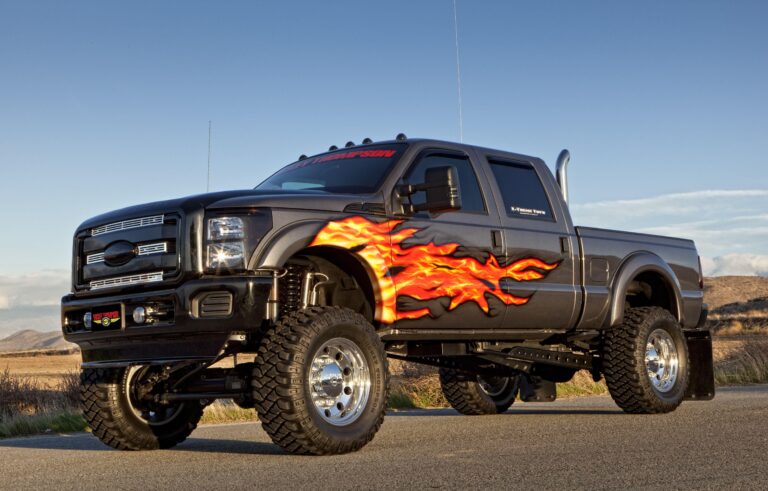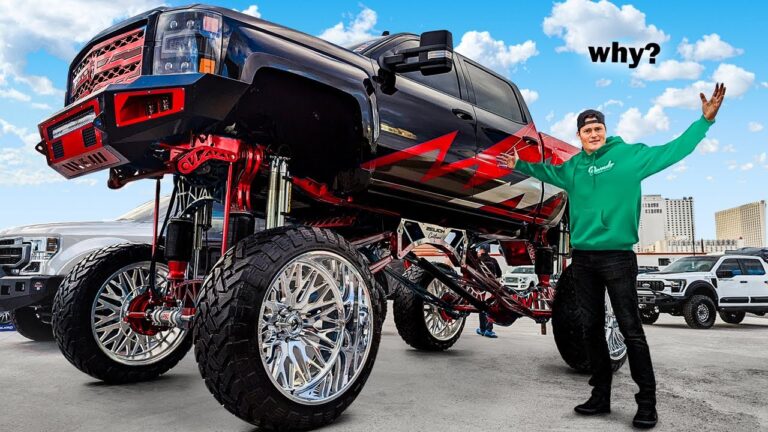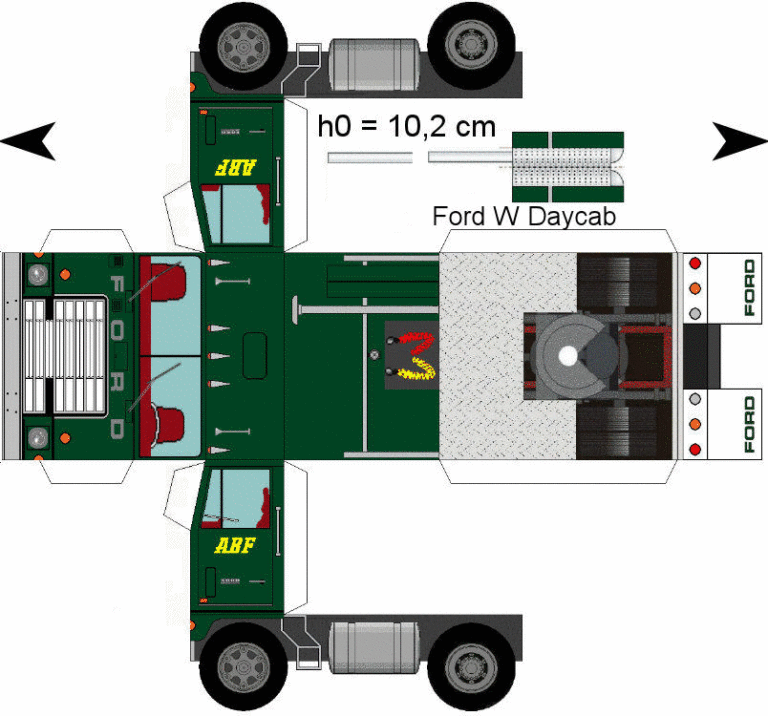Used Dodge 2500 4×4 Trucks For Sale: Your Ultimate Buyer’s Guide
Used Dodge 2500 4×4 Trucks For Sale: Your Ultimate Buyer’s Guide cars.truckstrend.com
In the world of heavy-duty pickup trucks, few names resonate with the same blend of rugged capability, legendary power, and enduring appeal as the Dodge (now Ram) 2500. When you add the 4×4 capability, you’re looking at a vehicle designed to conquer challenging terrains, haul immense loads, and serve as a reliable workhorse for years. For many, a brand-new heavy-duty truck is simply out of reach financially, making the market for Used Dodge 2500 4×4 Trucks For Sale an incredibly attractive proposition. This comprehensive guide will navigate you through everything you need to know, from understanding what makes these trucks special to making a smart purchase.
Why Choose a Used Dodge 2500 4×4?
Used Dodge 2500 4×4 Trucks For Sale: Your Ultimate Buyer’s Guide
The decision to opt for a used Dodge 2500 4×4 is often driven by a desire for serious capability without the hefty price tag of a new model. These trucks are renowned for their robust construction and powerful engine options, making them ideal for a wide array of demanding tasks.
Key Benefits:
- Cost-Effectiveness: The most obvious advantage is the significant depreciation a new truck experiences in its first few years. Buying used allows you to get a highly capable vehicle for a fraction of the original cost.
- Legendary Powertrains: The Dodge 2500, particularly its diesel variants, is synonymous with the Cummins Turbo Diesel engine. These engines are celebrated for their incredible torque, durability, and long lifespan, often exceeding 300,000 miles with proper maintenance. Gas options, like the Hemi V8, also offer substantial power.
- Unmatched Capability: With high towing and payload capacities, a used Dodge 2500 4×4 is ready for anything from pulling large RVs or construction equipment to hauling heavy loads in its bed. The 4×4 system provides superior traction for off-road adventures, snowy conditions, or muddy job sites.
- Proven Reliability: While any used vehicle requires scrutiny, the core components of the Dodge 2500 are built to last. Many owners attest to their trucks’ ability to withstand years of hard work.
- Strong Aftermarket Support: Due to their popularity, there’s a vast aftermarket for parts, upgrades, and modifications, making maintenance and customization relatively easy and affordable.

Understanding the Generations and Powertrains
The Dodge 2500 has evolved significantly over its lifespan, with different generations offering distinct features and engine options. Knowing these differences is crucial for making an informed choice.
- Second Generation (1994-2002): These trucks are instantly recognizable by their "big rig" styling.
- Engines: Primarily known for the 5.9L Cummins 12-valve (mechanical fuel injection, often considered bulletproof) and later the 24-valve (electronic fuel injection, more power but some known issues like VP44 fuel pump failures). Gas options included the 5.9L Magnum V8 and the massive 8.0L V10.
- Pros: Simpler mechanics (especially 12v), rugged, relatively affordable.
- Cons: Prone to rust (rocker panels, wheel wells), interiors can be basic and show wear.
- Third Generation (2003-2009): A major redesign brought more modern styling and improved interiors.
- Engines: The 5.9L Cummins 24-valve common rail (CR) diesel was a powerhouse, followed by the introduction of the 6.7L Cummins in mid-2007 (with DPF and EGR emissions equipment). The 5.7L Hemi V8 became the primary gas option.
- Pros: More refined ride, stronger frames, powerful CR Cummins.
- Cons: Early 6.7L Cummins can have emissions system issues, known "death wobble" in some models due to steering/suspension components.
- Fourth Generation (2010-2018): Ram separated from Dodge as its own brand. These trucks feature a more upscale interior and updated styling.
- Engines: The 6.7L Cummins diesel continued with refinements, and the 5.7L Hemi V8 was standard, with the more powerful 6.4L Hemi V8 introduced later as an option.
- Pros: Significantly improved interiors, quieter cabin, more modern features, robust powertrains.
- Cons: Higher price point, still subject to some common heavy-duty truck wear items.
Transmission Options: You’ll find a mix of manual and automatic transmissions. Manuals (like the NV4500 or G56) are often favored by enthusiasts for their durability, while automatics (47RE, 48RE, 68RFE) offer convenience but can be prone to issues if not properly maintained or if overloaded.
Key Considerations When Buying
Purchasing a used heavy-duty truck requires a thorough approach. Here’s what to scrutinize:
- Thorough Inspection is Paramount:
- Frame and Body Rust: Check the frame rails, rocker panels, cab corners, and wheel wells. Rust can compromise structural integrity and be costly to repair.
- Suspension and Steering: Look for worn ball joints, tie rods, and track bar. These are common culprits for the "death wobble" issue (a violent shaking of the front end). Check shocks and springs for leaks or sagging.
- Brakes and Tires: Ensure adequate pad thickness and rotor condition. Tires should have even wear and sufficient tread depth.
- Engine Health (Especially Cummins):
- Diesel: Look for excessive smoke (blue/white/black), listen for unusual noises, check for oil leaks (especially around the front cover and rear main seal). Perform a blow-by test (remove oil cap while engine is running, look for excessive pressure). Check for signs of DPF/EGR issues on 6.7L models.
- Gas (Hemi): Listen for exhaust manifold leaks (ticking sound), check for oil consumption, and ensure smooth idle and acceleration.
- Transmission and Drivetrain:
- Transmission: Check fluid condition (should be red, not dark or burnt smelling). Listen for grinding or clunking during shifts. Test all gears, including reverse. For 4×4, engage 4-High and 4-Low to ensure the transfer case functions properly.
- Differentials: Check for leaks around the axles and differential covers.
- Maintenance Records: This is gold. A truck with a history of regular oil changes, fluid flushes, and proactive repairs is far more desirable than one without.
- Mileage vs. Condition: High mileage is not necessarily a deal-breaker for a Cummins diesel, provided the truck has been well-maintained. A 200,000-mile diesel with meticulous records can be a better buy than a 100,000-mile one that’s been abused.
- Aftermarket Modifications: Lift kits, performance tuners, upgraded exhaust systems, etc., are common. While some can enhance performance or aesthetics, poorly installed or cheap modifications can lead to problems. Inquire about who installed them and if documentation exists.
Where to Find Used Dodge 2500 4x4s
- Online Marketplaces: Websites like AutoTrader, Cars.com, CarGurus, and even local platforms like Facebook Marketplace and Craigslist are excellent starting points. Filter your search by make, model, year range, and 4×4.
- Dealerships: Both new and used car dealerships often have a selection of used heavy-duty trucks. They typically offer financing and warranties, but prices might be higher.
- Specialty Truck Dealers: Some dealers specialize exclusively in trucks, often having a deeper knowledge of these vehicles.
- Auctions: Government or public auctions can yield good deals, but they often require more expertise and come with "as-is" conditions.
The Buying Process and Negotiation Tips
- Research Market Value: Use resources like Kelley Blue Book (KBB), Edmunds, or NADA Guides to get an idea of the truck’s fair market value based on year, mileage, condition, and options.
- Contact Seller: Ask detailed questions about the truck’s history, maintenance, and any known issues. Request photos of specific areas (e.g., frame, undercarriage).
- Test Drive Thoroughly: Don’t just drive around the block. Take it on the highway, city streets, and if possible, engage 4×4 in a safe, appropriate area. Listen for unusual noises, check steering feel, and evaluate braking performance.
- Pre-Purchase Inspection (PPI): This is the single most important step. Have an independent, trusted mechanic (preferably one specializing in heavy-duty trucks or diesels) inspect the vehicle before purchase. They can identify hidden problems that could save you thousands.
- Negotiate: Be prepared to negotiate the price. Use any identified issues from the PPI as leverage. Don’t be afraid to walk away if the deal doesn’t feel right.
- Factor in Potential Costs: Budget for immediate maintenance items (fluids, filters) and potential repairs that might arise after purchase.
Owning and Maintaining Your Used Dodge 2500 4×4
Once you’ve found your ideal used Dodge 2500 4×4, proper maintenance is key to its longevity and performance.
- Regular Fluid Changes: Adhere to the manufacturer’s schedule for engine oil, transmission fluid, differential fluid, and transfer case fluid.
- Fuel System Maintenance: For diesels, regular fuel filter changes are critical to protect the expensive fuel injection system.
- Tire Care: Rotate tires regularly and ensure proper inflation. Get an alignment check if you notice uneven tire wear or steering issues.
- Address Issues Promptly: Don’t defer maintenance or ignore warning lights/noises. Proactive repairs are almost always cheaper than reactive ones.
- Join Communities: Online forums and local truck clubs are invaluable resources for advice, troubleshooting, and finding reputable mechanics.
Used Dodge 2500 4×4 Trucks For Sale: Estimated Price Guide
Please note: Prices for used trucks vary significantly based on condition, mileage, specific trim level, engine type, modifications, and regional market demand. This table provides a general estimation.
| Model Year Range | Engine Type | Estimated Price Range (USD) | Key Features / Notes |
|---|---|---|---|
| 1994-2002 | 5.9L Cummins (12v/24v) | $8,000 – $25,000 | "2nd Gen" iconic styling, highly sought 12v diesel. Rust common. |
| 5.9L Magnum V8 / 8.0L V10 | $5,000 – $15,000 | Gas options, less demand than diesel. | |
| 2003-2007 | 5.9L Cummins (CR) | $15,000 – $35,000 | "3rd Gen" Common Rail diesel, powerful. Infamous "death wobble" possibility. |
| 5.7L Hemi V8 | $10,000 – $20,000 | First Hemi in 2500, strong gas alternative. | |
| 2007.5-2009 | 6.7L Cummins | $18,000 – $40,000 | 6.7L introduced, DPF/EGR issues for early models. |
| 5.7L Hemi V8 | $12,000 – $25,000 | Continues as gas option. | |
| 2010-2018 | 6.7L Cummins | $25,000 – $55,000+ | "4th Gen" significant interior/exterior updates, more refined. |
| 5.7L Hemi V8 / 6.4L Hemi | $15,000 – $35,000 | 6.4L Hemi introduced as a stronger gas option. |
Frequently Asked Questions (FAQ) about Used Dodge 2500 4×4 Trucks
Q: What is the best engine for a used Dodge 2500 4×4?
A: For heavy towing, maximum longevity, and better fuel economy (for a truck of this size), the Cummins Turbo Diesel (either 5.9L or 6.7L) is generally preferred. If your needs are less extreme, or you prefer lower upfront costs and simpler maintenance, the Hemi V8 is an excellent gas-powered alternative.
Q: What are common problems to look out for in a used Dodge 2500 4×4?
A: Key issues include the "death wobble" (often caused by worn steering and suspension components), rust (especially on older models in the frame, rocker panels, and wheel wells), transmission issues (particularly on automatics if not maintained), HVAC blend door failures, and for early 6.7L Cummins, potential problems with the Diesel Particulate Filter (DPF) and Exhaust Gas Recirculation (EGR) systems.
Q: Is high mileage a concern for a Cummins diesel?
A: Not necessarily. Cummins engines are renowned for their durability and can easily exceed 300,000 or even 500,000 miles if properly maintained. Focus more on the truck’s maintenance history and current condition rather than just the odometer reading.
Q: How much can a used Dodge 2500 4×4 tow?
A: Towing capacity varies significantly by year, engine, transmission, and specific configuration. Generally, diesel models can tow from 12,000 lbs up to over 20,000 lbs. Always check the specific truck’s owner’s manual or door jamb sticker for its exact towing and payload ratings.
Q: Should I get a pre-purchase inspection (PPI)?
A: Absolutely. A PPI by an independent, qualified mechanic is highly recommended, especially for any used heavy-duty truck. It can uncover hidden mechanical issues, rust, or previous damage that might not be obvious during a casual inspection, potentially saving you thousands in future repairs.
Q: What’s the difference between the 12-valve and 24-valve 5.9L Cummins?
A: The 12-valve (found in 1994-1998 models) uses a mechanical fuel pump and is known for its simplicity and robustness. The 24-valve (1998.5-2007) uses an electronic fuel pump (VP44 or Common Rail) which offers more power and refinement but is more complex. Early 24v models (1998.5-2002) are known for potential VP44 pump failures and some models had a casting defect known as the "53 block."
Conclusion
A used Dodge 2500 4×4 truck represents an outstanding value proposition for anyone needing serious capability without the new vehicle price tag. Whether you’re a contractor, an avid outdoorsman, or simply need a powerful and reliable truck for daily tasks, these machines are built to perform. By understanding the different generations, knowing what to look for during inspection, and following a smart buying process, you can confidently find a powerful and reliable partner that will serve you well for many years to come. With proper research and a thorough pre-purchase inspection, your journey to owning a formidable used Dodge 2500 4×4 will be a rewarding one.





